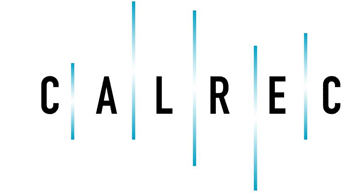Government Video Expo 2017: Calrec Audio To Showcase Brio Console
Story Highlights
Calrec Audio’s Brio console will be showcased at Government Video Expo 2017. Brio is one of the most powerful and compact digital broadcast audio consoles in its class, with a comprehensive broadcast feature set that supports a wide breadth of broadcasters.
 The smallest in Calrec’s Bluefin2 family, Brio features a control surface unlike any other. At only 892 millimeters wide, the dual-layer, 36-fader surface provides more faders in a given footprint than any other audio broadcast console.
The smallest in Calrec’s Bluefin2 family, Brio features a control surface unlike any other. At only 892 millimeters wide, the dual-layer, 36-fader surface provides more faders in a given footprint than any other audio broadcast console.
Based on Calrec’s 20 years of digital development, Brio’s uncluttered, compact, and configurable surface gives instant access to a large number of audio paths, while an intuitive 15.6-inch HD touch-screen user interface provides quick access to more in-depth control. A bank of illuminating hardware rotary controls gives fast and precise control over parameters displayed in the touch-screen interface.
Brio is entirely self-contained, with analog and digital I/O and GPIO built into the surface. Additional expansion I/O slots allow for further I/O integration, and fitting an available Hydra2 module makes it possible to connect to and share audio over Calrec’s Hydra2 network.
RP1 Remote Production Unit New Features
Calrec’s RP1 remote production unit is a unique live-broadcast product that directly addresses an increasingly prevalent requirement for high-quality content from remote locations.
Remote production offers the ability to capture a broader range of live events, such as sports, news, or regional music festivals. Broadcasters cannot always justify the time or expense of sending a dedicated outside broadcast truck and a team of skilled on-site operators for these niche events, but they must always ensure that the same high broadcast standards are met.
RP1 consists of a 2U core that contains integrated FPGA-based DSP, enabling a console surface at another facility to control all mixing functionality. The RP1 core manages all the processing for interruptible foldback (IFB) routing and remote monitor mixes, and it does so locally with no latency. This level of integration and remote control makes it simple for any remote mix engineer to set up IFB mixes and eradicates any delay for remote listeners or presenters.
The RP1 core quickly embeds audio into existing video-transport mechanisms, while its modular I/O backbone accepts any of Calrec’s I/O cards. This versatility means the RP1 can connect via analog, AES, MADI, SDI, and the latest AoIP solutions such as AES67, Ravenna, and Dante.
At Government Video Expo 2017, Calrec will demonstrate a suite of new features on the RP1. These include a two-band filter and four-band EQ, expander and gate facilities, compressor and sidechain EQ facilities, direct output for all remote faders (up to 5.1), and remote auxes via Calrec Assist.
The new software also provides VCA master control from the host console and pairing of transmission and remote faders so that any fader/cut changes are applied to both TX and IFB paths on to remote faders and remote auxes. A new “blocking” mode prevents the RP1 unit from affecting the paired transmission faders, while the “independent” mode ensures the RP1 can operate independently of the host when required.
